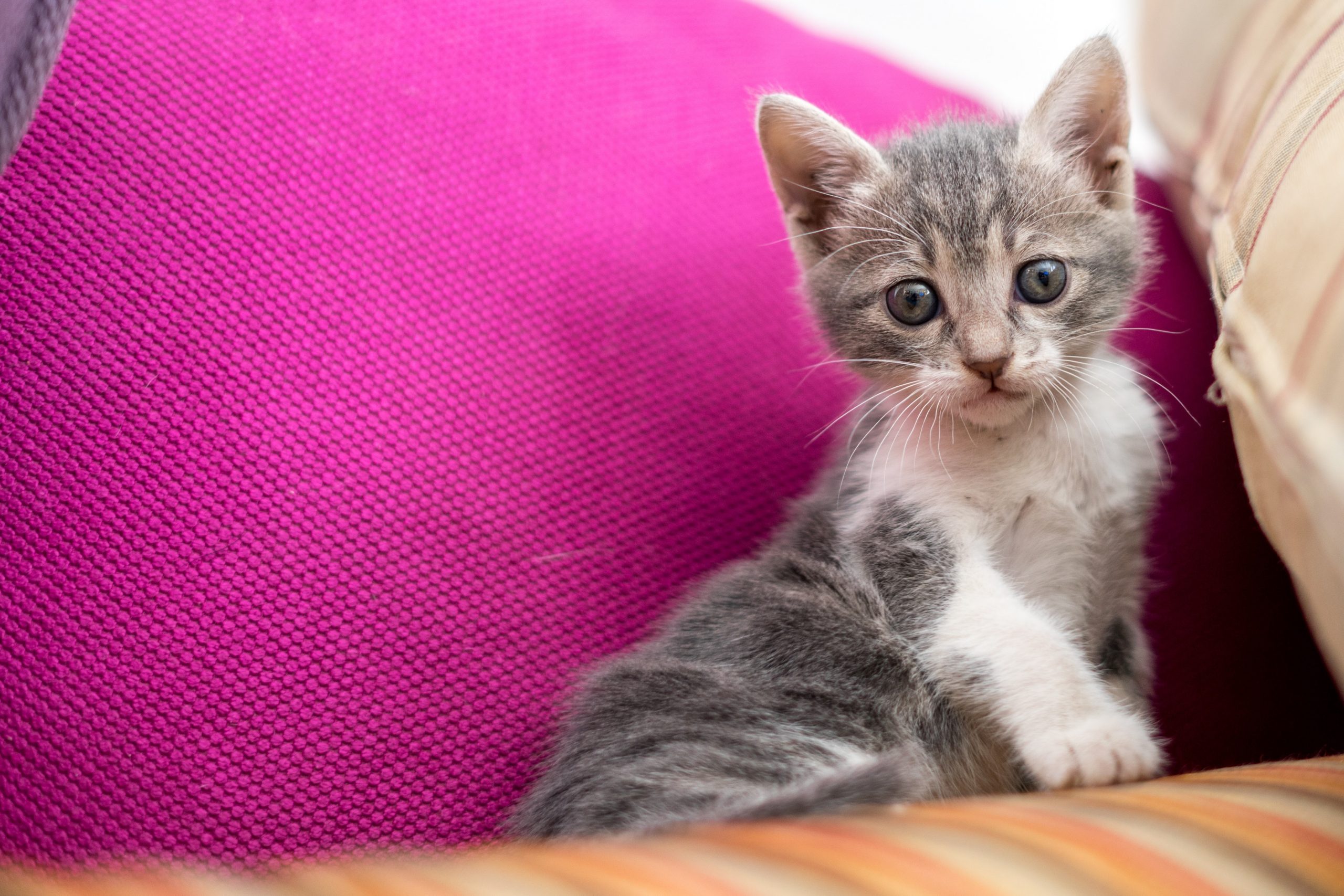The New Kitten Essentials Supply & Care Checklist

Introduction
Are you ready to welcome a new furry addition to your family? If so, it’s important to make sure you have all the kitten essentials to provide the best care for your new cat. From food and water bowls to a cozy bed and litter box, there are a few key items you’ll need to ensure your kitten’s comfort and well-being.
In this article, we’ll provide a comprehensive checklist of the essential supplies you’ll need for your new kitten. We’ll cover everything from grooming tools and toys to healthcare products and training aids to help you prepare.
Preparing Your Home For a New Kitten
Bringing a new kitten into your home is exciting, yet it’s crucial to ensure your living space is safe and secure for your new furry companion. Kitten-proofing your living space is crucial to prevent any accidents or injuries. Start by ensuring all electrical cords are safely tucked away or covered with cord protectors. Kittens are known for their curiosity and love to chew on anything they can find, so it’s essential to eliminate any potential hazards.
Next, take a look at your houseplants. Many common plants are toxic to cats, so remove any toxic plants or place them out of reach. Additionally, secure any loose items that could be knocked over or swallowed, such as small decorations or loose change.
Creating a safe space for your new kitten is essential. Set up a designated area where your kitten can feel secure, such as a small room or a cozy corner. This will help your kitten adjust to their new surroundings and provide comfort.
Essential Supplies For a New Kitten
When it comes to essential supplies for your new kitten, there are a few essential items that should be at the top of your checklist. First and foremost, you’ll need food and water bowls. Look for bowls that are easy to clean and made of non-toxic materials. Having multiple bowls to ensure your kitten always has access to fresh food and water is also a good idea.
A comfortable bed is another essential item for your new kitten. Look for a bed that is the appropriate size for your kitten and made of soft, washable material. Providing a cozy bed will not only keep your kitten comfortable but also give them a sense of security.
Next, you’ll need a litter box and litter. Choose a litter box that is large enough for your kitten to move around in and has low sides for easy access. There are many different types of litter available, so experiment to find the one that works best for you and your kitten. And don’t forget to clean the litter box regularly and scoop it daily to keep it hygienic.
Choosing the Right Litter Box and Litter
When selecting a litter box for your new kitten, consider several important factors. The size is essential, as you want it to be large enough for your kitten to move around comfortably. Also, ensure the litter box has low sides to allow easy access, especially for younger kittens.
The type of litter you choose is also important. Various options include clay litter, clumping litter, and natural alternatives. Each type has its pros and cons, so it’s a good idea to try out different options to see which one works best for your kitten. Remember to avoid scented litters, which can be overpowering for your kitten’s sensitive nose.
It’s important to note that some kittens may have litter box preferences. If you notice your kitten avoiding the litter box or having accidents outside, try experimenting with different types of litter or different litter box designs. The goal is to create a comfortable and inviting environment for your kitten to do their business.
Feeding and Nutrition for Kittens

Proper nutrition is essential for your kitten’s growth and development. When feeding your new kitten, there are a few key things to remember. First, choose a high-quality kitten food that is specifically formulated for their nutritional needs. Search for a pet food that includes nutrients like protein, fats, and carbohydrates.
Setting up a regular feeding routine for your kitten is crucial. Young kittens must be fed multiple times daily, as their stomachs are small and cannot hold much food. As your kitten grows, you can gradually decrease the number of feedings per day.
Always make sure your kitten has access to fresh water when feeding them. Since kittens are prone to dehydration, it’s important to keep their water bowl clean and consistently filled with fresh water.
Grooming and Hygiene for Kittens
Grooming is part of maintaining your kitten’s health and well-being. Start by getting a soft brush or comb specifically designed for kittens. Brushing your kitten regularly will help keep their coat clean and tangle-free. It will also help to remove any loose hair, reducing the risk of hairballs.
Bathing your kitten should be done as needed. Use a mild, kitten-specific shampoo and rinse thoroughly to remove all traces of soap. Remember to keep the water temperature warm and comfortable for your kitten.
In addition to brushing and bathing, make sure to take care of your kitten’s nails. Invest in a pair of kitten nail clippers and trim their nails regularly to prevent them from scratching furniture or accidentally scratching themselves.
Training and Socializing Your New Kitten
Training and socializing your new kitten are crucial for their development. Start by providing a designated scratching post or board for your kitten. This will help redirect their instinct to scratch and prevent them from damaging your furniture. Motivate your kitten to scratch the post by offering praise and treats whenever they use it.
Focus on socializing them as well. Introduce them to different people, animals, and environments gradually. Creating positive experiences during your kitten’s socialization phase is key to helping them develop into confident and well-behaved adult cats. Utilize treats and praise to reinforce good behavior and ensure that your kitten enjoys these learning moments.
Health and Veterinary Care For Kittens

Consistent veterinary check-ups are crucial for your kitten’s health and happiness. Arrange a visit to the vet soon after your kitten arrives home. During the visit, the vet will perform a comprehensive exam to ensure your kitten’s health.
During the first visit, your veterinarian will discuss vaccinations and preventative care. Vaccines are necessary to protect your kitten from prevalent illnesses. Your vet will devise a vaccination plan tailored to your kitten’s age and unique health requirements.
Spaying or neutering your kitten is another crucial aspect of their healthcare. This process aids in managing the pet population and offers numerous health advantages for your kitten. Your veterinarian can provide more information on the timing and benefits of spaying or neutering.
Here’s an overview of the essential components of cat vaccines:
- Vaccinations: Vaccines are vital in preventing many serious diseases and help maintain your pet’s health. Vets recommend a vaccination schedule based on your pet’s age, lifestyle, and health status. Common cat vaccines include those for feline leukemia and rabies.
- Parasite Control: Parasites like fleas, ticks, and worms can cause serious health issues. Regular treatments are necessary to keep these pests at bay.
- Spaying/Neutering: These surgical procedures not only prevent unwanted litter but also offer health benefits. Spaying a female cat can help avoid uterine infections and breast cancer, whereas neutering a male cat can prevent testicular cancer and reduce the risk of specific prostate issues. Additionally, it can help reduce specific behavioral problems.
- Regular Health Check-ups: Regular vet check-ups, either annually or bi-annually, are crucial for the early identification of health problems. In these visits, your vet will assess your pet’s overall body condition, coat, eyes, ears, and dental health. They’ll also check for signs of any emerging health problems. These regular visits are a chance to discuss diet, exercise, and behavioral concerns.
What Expenses Does Odie Pet Insurance Cover for Your Cat?
Various plans are available for insuring your pet, each with coverage alternatives and advantages. Let’s discuss three distinct kinds of insurance policies that may be purchased for cats:
Injury & Illness Pet Insurance
Odie’s Injury and illness pet insurance covers unexpected veterinarian costs connected to damage or disease, such as those incurred due to accidents, illnesses, or inherited disorders. Although the specifics of coverage might vary from one plan to the next, most policies include coverage for diagnostic procedures, medicines, surgical procedures, hospitalization, and emergency care.
Accident-Only Pet Insurance
This Odie Accident Only pet insurance covers only injuries caused by accidents, such as bite wounds or ingesting foreign substances. It’s possible that it won’t cover preexisting ailments or illnesses.
Wellness and Routine Pet Care Plan
Odie’s Wellness Plan (an add-on to an insurance plan) pays for preventative veterinarian care, which includes yearly checkups, vaccines, flea and tick prevention, and dental cleanings/examinations. Spaying and neutering may also be included under some policies.
How Much Does Pet Insurance Cost?
The costs of pet insurance are highly variable and depend on several factors, such as the age of the pet, the breed, and the coverage options. Odie Pet Insurance provides several plan options so you can find the right combination of coverage and premium.
The monthly premiums for Odie’s pet insurance for cats may range from $15 to $45 on average, and the coverage determines the price and plan the customer chooses. The cost of pet insurance may be affected by each of the following factors:
- Waiting Periods: Before coverage kicks in, most pet insurance policies include a waiting period, which can be, on average, a few days to several weeks.
- Annual Limits: Some pet insurance policies include a yearly cap on the total coverage they will pay out in any given year. After reaching this limit, the pet owner is responsible for paying any further expenditures that may occur.
- Pre-existing Conditions: If a cat has an existing medical condition, such as a chronic sickness or injury, a pet insurance policy may not cover the condition or limit coverage for the disease to specific scenarios. However, new illnesses or conditions will likely be covered.
- Co-Insurance: Some pet insurance plans have a co-insurance provision in which the policyholder is responsible for a particular portion of the cost of veterinarian care.
When determining the cost of cat insurance, owners must evaluate the various policies offered and consider the degree of protection their furry buddy needs.
Read more about the limits and benefits of your pet insurance here.
Conclusion
Bringing a new kitten into your home is a joyous occasion, but it also comes with responsibilities. Following this comprehensive checklist of kitten essentials, you’ll be well-prepared to provide the best care for your new furry friend.
Make sure to make your home safe for kittens and have the basics ready, like bowls for food and water, a cozy bed, and a litter box.
Choose a suitable litter and establish a feeding schedule for your kitten. Remember to groom and socialize your kitten, and prioritize regular veterinary care to ensure their health and well-being.
With the right supplies, care, and love, your new kitten will thrive in their new home. Enjoy the journey of raising a kitten, and cherish the special moments you’ll share.
*Updated April 10, 2024



